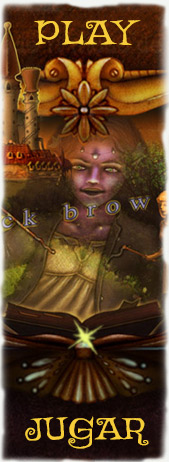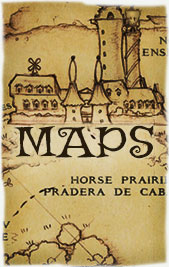Game Design Digest #3: Geek And Sundry
Recently I’ve spent perhaps 50 hours watching game design Youtube videos. Geek and Sundry has some very old videos on game writing and campaign design, but you have to scroll back at least 5 to 6 years in their enormous pile of archives to find them. Have fun with that!
As with the previous installments of this series of blog posts, I saved my own handwritten notes from these videos, extracting only that which can be useful for making a CRPG, and not for running a tabletop game. I’ve also included a bit at the end from the D&D and Beyond channel, so that’s another one to check out.
The following sections are design notes from Matthew Mercer, Voice Actor and DM for Geek And Sundry’s Critical Role.
Bare Bones Adventure Design
1. Determine what characters the players like to play: good, evil, premade heroes, simple level ones, etc.
2. Determine what style of adventure the players like: i.e. pure dungeon crawling, diplomacy.
3. Now need a plot hook that fits the player’s tastes. Grab players early with a strong inciting incident, plus a mystery.
4. Who or what is the big antagonist. Interesting, dangerous. What is their motivation. Is there time pressure?
5. Fill in the middle with challenges, obstacles. Key NPC’s, lackeys, mentors who might donate helpful items, along with interesting locations where they might be find. Social encounters with good and evil factions.
6. Refine the ideas with specific scenarios that let each party member shine and be a hero. Add some interesting and juicy loot. Prepare some strong descriptive paragraphs for key NPC’s and locations.
Building RPG Encounters
First of all, what terrain or region are you in? Monsters are usually categorized by where they are found.
When creating a map, try for creative terrain, something a little different. Furniture can be used for blockades. Are there features in the terrain that offer movement blocks during a battle? Find some way to make the battlefield more interesting than just a slugfest of HP back and forth.
Intelligent creatures might we willing to resolve with diplomacy. Intelligent creatures will often try to flee at low HP.
Not all battles should be won. Some should be foreshadowing, or getting to know the villain.
NPC Creation
First decision: are they major or minor?
Minor: need name, sex, job, faction or political affiliations, guilds, allies or enemies they might have.
Major: include ideals, desires, fears, their current disposition towards the players, their skills, equipment. If you do character voices, note the voice you used.
A good villain is very important. Acts by their own beliefs, may see others as villains of their own heroic story. See The Book of Vile Darkness, which has excellent treatment of villains.
Social Non-combat Encounters
Lots of ideas to incorporate social combat your games. Balls, council meetings, diplomatic missions, spy games, interrogations, investigations. Infiltration. Contest of skill or a gauntlet to prove oneself.
What is the overall goal of the social encounter? Helps to be clear on this with yourself and the players.
Make sure the NPC enemies are fleshed out with motives, things they want, or want to hide. Are they willing to sell information? What are they weak to? Strong against? Factions? Must players choose a side?
Raise the stakes. Always try to raise the stakes.
Finding a hidden spy is cool. Stolen objects work well. Information used against the party.
Always have a plan in case a fight breaks out in a specific social encounter.
Rule of Cool.
(Final notes by Matthew Mercer.)
Willing suspension of disbelief to allow something cool to happen. Establish how realistic and strict the setting and campaign is going to be. Allow something crazy every now and then for the sake of fun, even if the rules probably wouldn’t allow it. Reward creativity, while keeping hands on the reins. The story is supposed to be heroic. A game is supposed to be fun.
Design Notes From Satine Phoenix.
Satine Phoenix is another GM from Geek and Sundry, but again you have to dig very deep into their archives to find these old videos. Here are some notes about writing from a few of them.
(The main takeaway for me here is obstruction. I’m terrible and lazy at creating constant obstructions and frustrations. I have very poor ability to increase tension and see the long game, and need to improve. I actually did purchase and start reading the book recommended by Satine below.)
There are different styles/types of storytelling/GMs.
Obstructing – constantly setting challenges to overcome.
Narrative – focused on going through the storyline and hitting plot points.
Experiental – finding the great moments, making the most of them.
Uplifting – constantly for the players, making them happy and fulfilling their fantasies.
Story Structure. Read and study Story: Substance, Structure, Style and the Principles of Screenwriting, by Robert McKee. Use the “Harmon Circle Theory” by Dan Harmon, which is similar to Campbell’s journey of the hero. You -> Need -> Go -> Search -> Find -> Take -> Return – > Change.
Satine notes the “finding phase” is a good place to subvert expectations with something unexpected. Asking all sorts of ‘why’ is a good technique to get deeper into the game world.
<h3>The Neverending Story – (How to find ideas for new plots, arcs.)</h3>
Bring it back. Go back to early modules and look for loose ends, bring back NPC’s and their unfinished stories.
Develop your world further. Look for gaps in your game world knowledge, not just geographical but also sociopolitical. Building this knowledge will naturally lead to ideas.
Ask your players where they want to go or explore.
D&D And Beyond
(The final notes here are from D&D Beyond – Chris Perkins on Writing Dungeons and Dragons Adventures for a large audience.)
Basic adventure needs a good goal, a setting, and villains with their own goals. You can usually get away with being weak on one of the latter, but not the first one. Simplest and oldest motivation is greed. There is a big treasure. Go to get rich.
In many cases, this isn’t good enough, not appealing enough for either the characters or the players. So you want to make the goal more appealing to more people. So make the gold stolen from the church, for example. Or the gold is intended to fund a dastardly deed that needs to be stopped. Perhaps some characters in the party will have this motivation, others might go along to help.
The only thing that is really bad when over-used is giving players no control or agency. It can be OK once or twice, but not too often. Also, railroading with only one way forward is undesirable.
On Making Villains Unique. Two ways to make a great villain, according to feedback from publishers. Put a unique spin on an old, trite trope (or monster). Or give us a kick-ass map for a location.
Conclusion.
I enjoyed watching these videos by Geek and Sundry, et. al. on game design. It appears they aren’t doing things like this anymore. What else is there to say, at some point. I liked Matt’s style of smooth delivery a little more than Satine’s videos, but on re-reviewing here, I have to admit that Satine really packed good information into her videos.
So I would of course recommend watching both. They are really hard to find, though, which is why there aren’t any specific links here to specific videos. Going into those massive archives was a test of patience. Good luck and having fun designing!

